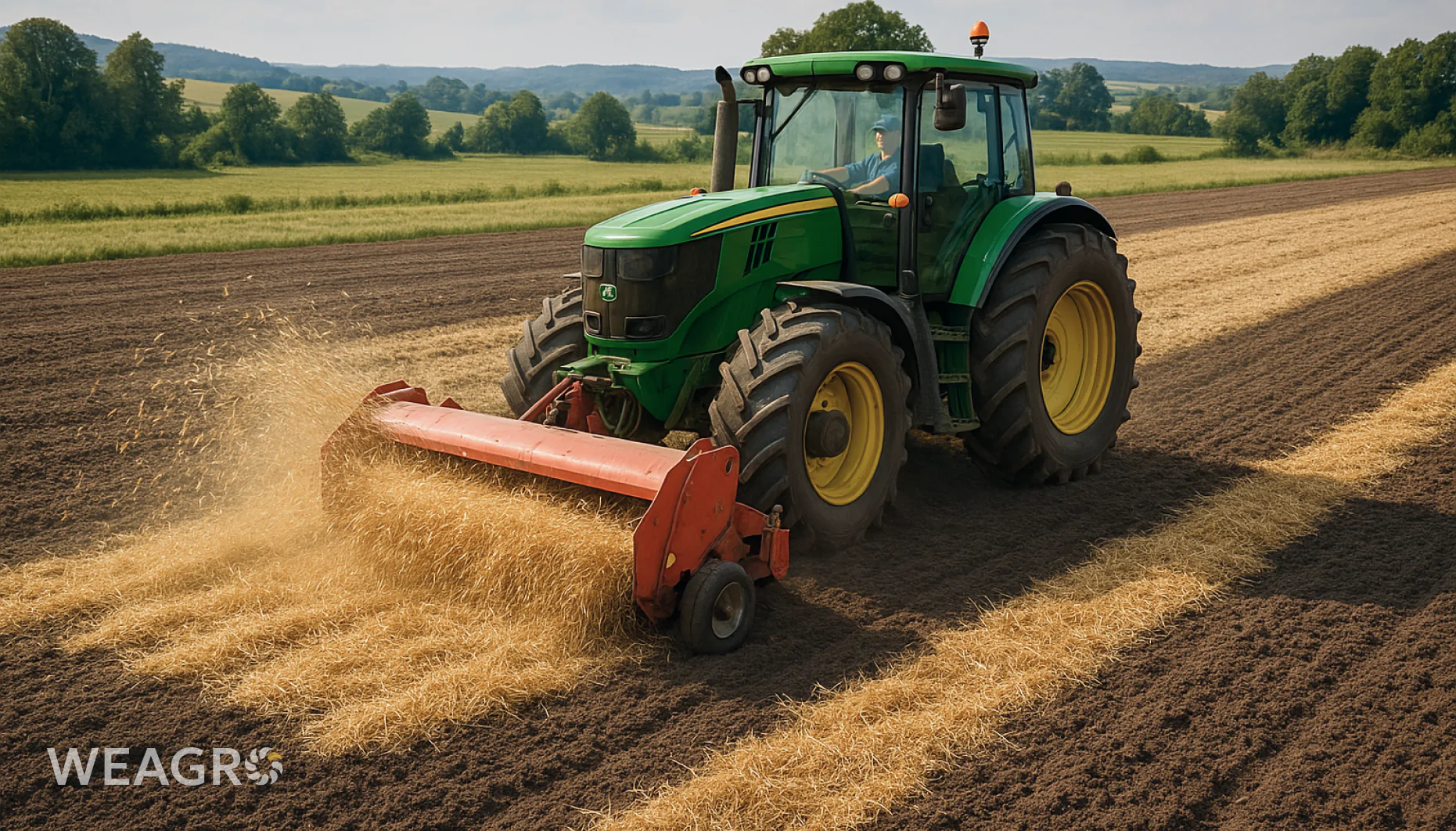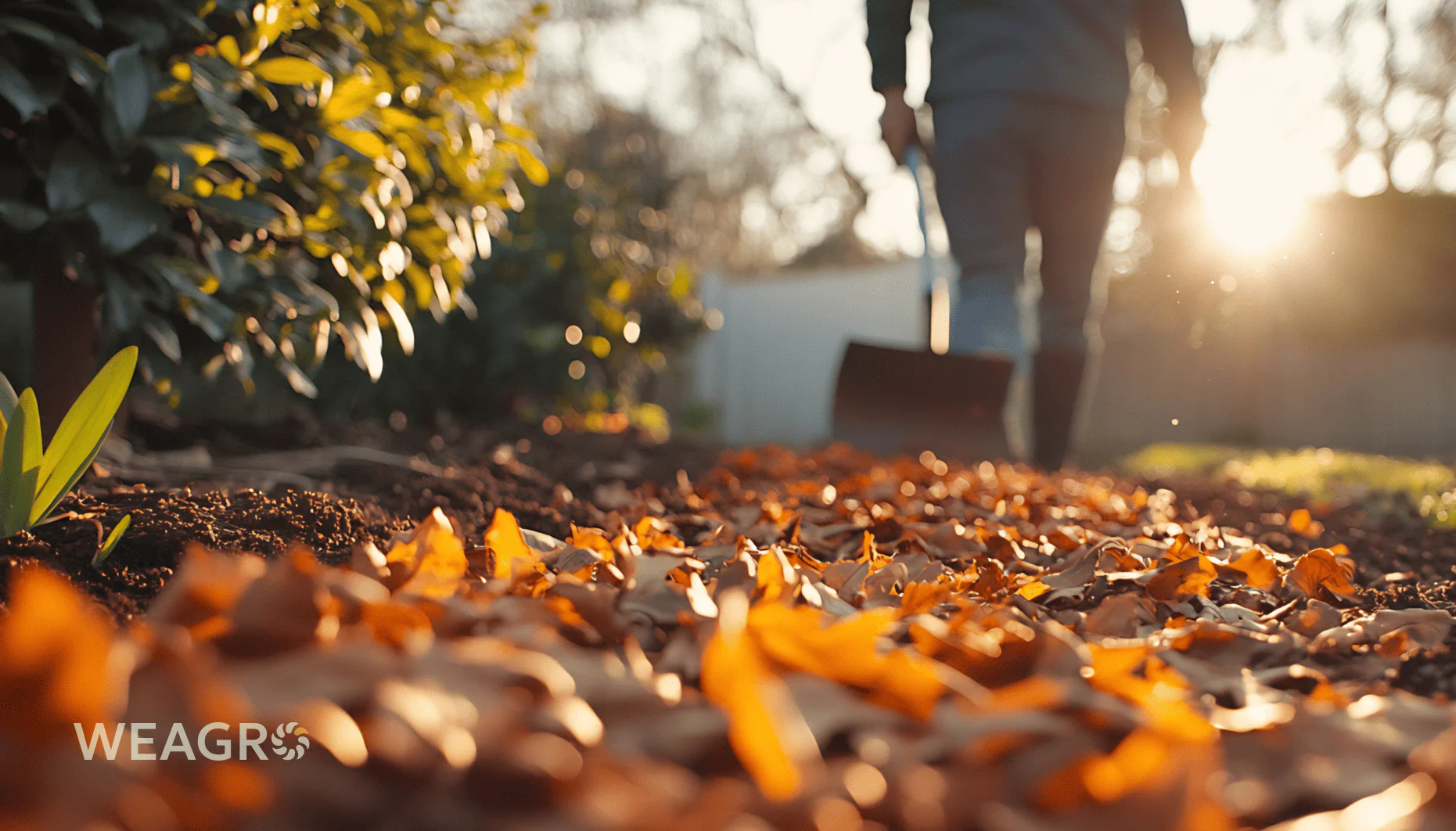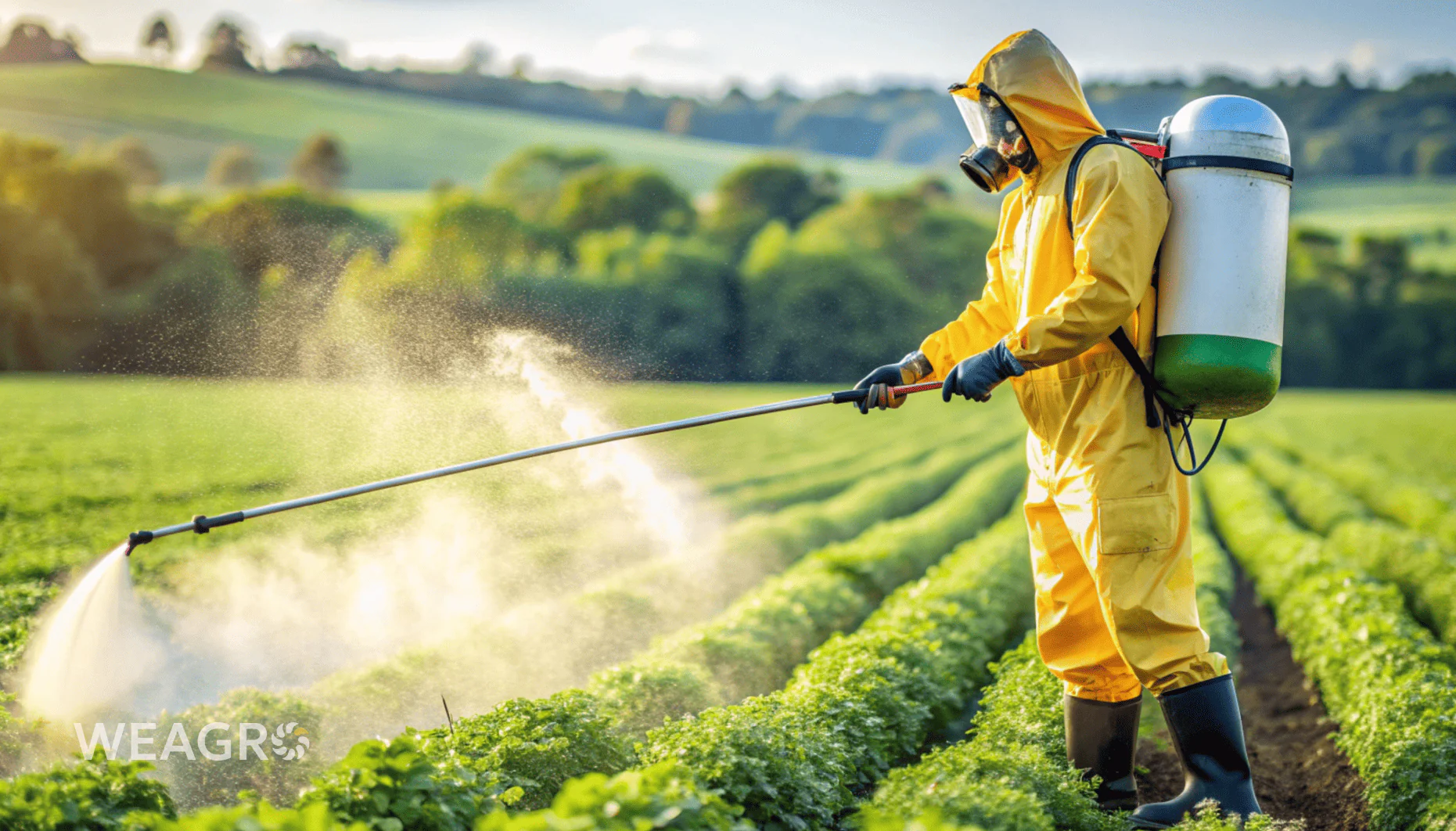Mulching is a beneficial agricultural practice that involves covering the soil surface with various materials. It helps retain moisture, regulate soil temperature, suppress weed growth, and improve soil structure. In this article, we will examine in detail what mulching is, why it is needed, what types of covering exist, and how to properly apply it. This information will be especially useful for farmers who strive to increase fertility and achieve abundant harvests.
Why Conduct Mulching
Soil mulching performs several important functions:
- Reduces moisture evaporation from the surface, which is especially relevant in arid regions.
- Protects roots from overheating in summer and overcooling in winter. The covering acts as a thermal insulator, smoothing sharp fluctuations in soil temperature. This is especially important for heat-loving crops and young seedlings.
- Suppresses weed growth, reducing the need for weeding. Light-impermeable materials, such as black film or dense agricultural fabric, completely block light access to weeds, preventing their germination.
- Improves soil structure by enriching it with organic matter during decomposition. For example, straw, hay, or sawdust gradually transforms into valuable humus, which serves as a source of nutrition for soil microorganisms and plants.
- Prevents compaction and erosion from rain or wind. The covering absorbs the impact of raindrops and reduces water flow velocity, protecting the soil from washing away. This is especially relevant for sloped areas and regions with intensive precipitation.
Proper mulching creates optimal conditions for the growth and development of agricultural crops. This practice can increase yields by 20-25% in extreme weather conditions.
Read also: Precision Farming in Ukraine: Definition and Prospects
Benefits of Mulching
Among the main advantages of mulching, the following should be noted:
- Water savings on irrigation due to reduced evaporation.
- Reduced labor costs for weed control. A thick layer (5-10 cm) can suppress the growth of most annual plants, reducing the need for manual or mechanical weeding.
- Increased fertility due to organic enrichment. During mulch decomposition, nutrients (nitrogen, phosphorus, potassium) are released, which are gradually absorbed by plants. Additionally, the covering stimulates the activity of beneficial soil organisms.
- Protection from erosion and compaction. The covered layer suffers less from wind or water, maintains loose structure, and absorbs moisture more effectively.
Thanks to optimal water-air regime and stable nutrition, plants develop better and form more fruits with improved taste properties.
Read also: Soil erosion: causes, types, control measures
Possible Disadvantages of Mulching
Despite numerous advantages, mulching may have some disadvantages:
- Certain types can attract the attention of rodents and insects. For example, straw or hay sometimes serves as shelter for mice, slugs, and other pests. Therefore, it is important to select the material carefully and monitor the condition of the mulch.
- Incorrect choice of covering can suppress seedling growth. For instance, fresh sawdust or insufficiently decomposed manure can cause starvation, as microorganisms consume large amounts of nitrogen for their decomposition.
- An excessively thick layer can impede water and air penetration to the roots. This is especially dangerous for young plants and crops with surface root systems. The optimal mulch thickness is 5-10 cm for most seedlings.
- Organic matter requires regular renewal. During decomposition, the volume of material decreases, so maintaining functions requires adding new material every 1-2 years.
Considering these nuances, potential risks can be minimized and maximum benefit obtained from covering. It is important to carefully select the covering, control layer thickness, and provide timely care.
WEAGRO is an online agricultural installment service for agribusiness that allows farmers to purchase necessary materials, including for soil mulching, with deferred payment. This is a convenient solution for those who strive to implement modern agricultural technologies without excessive financial burden.
Types of Mulch
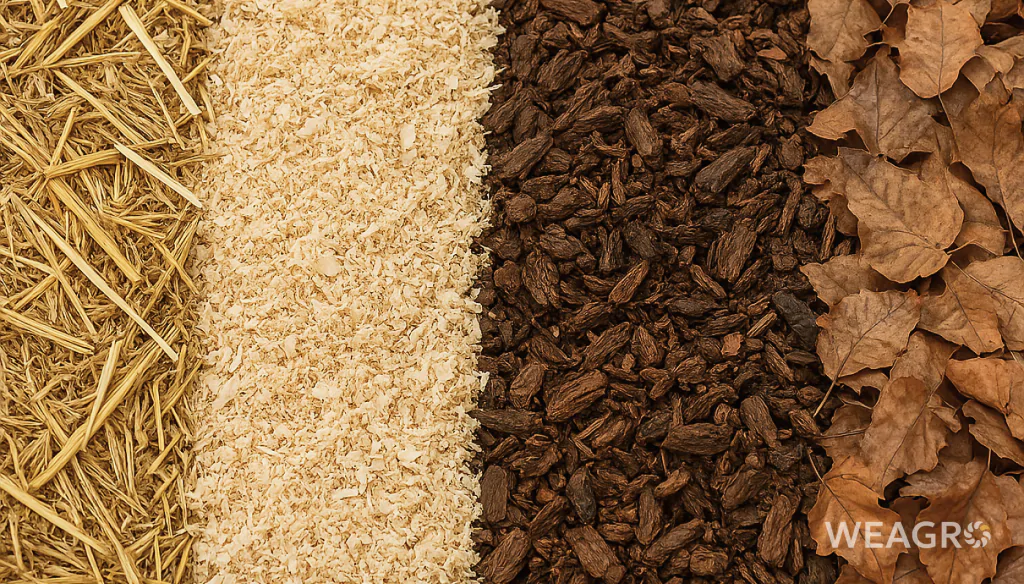
There are two main types of mulching – organic and inorganic. Each has its own characteristics, advantages, and applications.
Organic Mulch
| Name | Characteristics | Application |
| Straw | + Available and inexpensive+ Effectively retains moisture+ When decomposing, enriches the layer with organic matter, improves its structure- May contain weed seeds- Requires treatment for fungal diseases | Berry crops (strawberry, raspberry), vegetables (cucurbits, cabbage, potato), grains, ornamental plants |
| Hay | + Enriches soil with nutrients, especially nitrogen+ Improves soil structure and water retention+ Attracts earthworms- Decomposes quickly- May contain weed seeds | Vegetables (tomatoes, peppers, eggplants), berry crops, fruit trees and shrubs, flower beds |
| Sawdust | + Effectively retains moisture and suppresses weed growth+ Decomposes slowly, providing long-lasting mulching effect+ Gives soil looseness- May acidify soil- Requires additional nitrogen application | Ornamental plants, coniferous and deciduous trees, shrubs, garden paths |
| Bark | + Durable (3-5 years) and aesthetically appealing+ Effectively suppresses weed growth and retains moisture+ Protects soil from erosion and compaction- May acidify soil- Relatively expensive | Ornamental plantings, rock gardens, alpine slides, landscape design |
| Leaves | + Available+ Enriches soil with nutrients, especially when bioactivators are added+ Improves soil structure- May compact soil when wet- Decomposes quickly | Vegetables, flower beds, young trees and shrubs, compost piles |
| Grass clippings | + Contains abundant nitrogen and other nutrients+ Activates soil microorganism activity+ Helps loosen heavy soils- Decomposes quickly- May contain weed seeds | Lawns, vegetable beds, berry gardens, greenhouse crops |
| Compost | + Perfectly enriches soil with organic matter, improves its fertility+ Stimulates plant growth and development+ Suppresses weed growth- May contain pathogenic microorganisms if insufficiently decomposed- Attracts insects | Practically all vegetable, fruit, berry, and ornamental crops |
Organic materials are the most popular and beneficial for mulching due to their availability, environmental friendliness, and ability to improve fertility. However, they require more careful maintenance and regular renewal.
Read also: Organic agriculture: definition and development prospects
Inorganic Mulch
| Name | Characteristics | Application |
| Black film | + Effectively suppresses weed growth and retains moisture+ Warms soil in spring, allowing earlier seedling planting+ Prevents fruit contact with soil, improving their quality- Does not allow water and air passage- Requires complete removal at season end | Melon crops (watermelons, melons), vegetables (tomatoes, peppers, eggplants), strawberry, heat-loving and moisture-loving plants |
| Agricultural fabric | + Allows water and air passage, “breathes”+ Protects plants from frost in spring or autumn+ Creates optimal microclimate for roots+ Suitable for multiple use- Requires edge fixation- May tear from mechanical damage | Vegetables, strawberry, bulb flowers, ornamental plant seedlings |
| Gravel and crushed stone | + Durable (up to 5-7 years), aesthetically appealing+ Allow good water and air passage+ Protect soil from erosion and compaction- May overheat soil in summer- Inconvenient for weeding or loosening | Alpine slides, rock gardens, decorative compositions, garden paths |
| Marble chips | + Durable (up to 10 years), decorative+ Reflects sunlight, preventing soil overheating and leaf burns+ Neutral to most plants- May shift during heavy rains- Relatively expensive | Decorative compositions, plant containers, Japanese gardens |
Inorganic mulch has several advantages compared to organic – it is more durable, does not require frequent replacement, and serves as an original decorative element. However, it cannot improve soil structure and fertility, and sometimes may disrupt its water-air regime.
Magnetic mulch is an innovative material that contains ferromagnetic particles. Thanks to this, it can be easily applied and collected using magnetic devices, which significantly facilitates plant care. Such mulch is made from shredded automobile tires or polymer waste, making it an environmentally friendly solution. It effectively retains moisture, suppresses weed growth, and protects soil from overheating.
An interesting option for soil mulching is the use of large stones. They not only protect soil from drying out but also condense moisture from the air on their surface, providing “dry irrigation.” This is especially relevant in arid regions and during hot periods. Additionally, stones gradually release heat accumulated during the day at night, evening out daily soil temperature fluctuations.
When selecting material, its chemical composition should be considered to avoid unwanted reactions with soil or harm to plants. In particular, fresh coniferous sawdust may acidify soil, and tires may contain harmful substances. Therefore, before use, it is important to ensure the safety and suitability of mulch for specific needs.
How to Properly Conduct Mulching
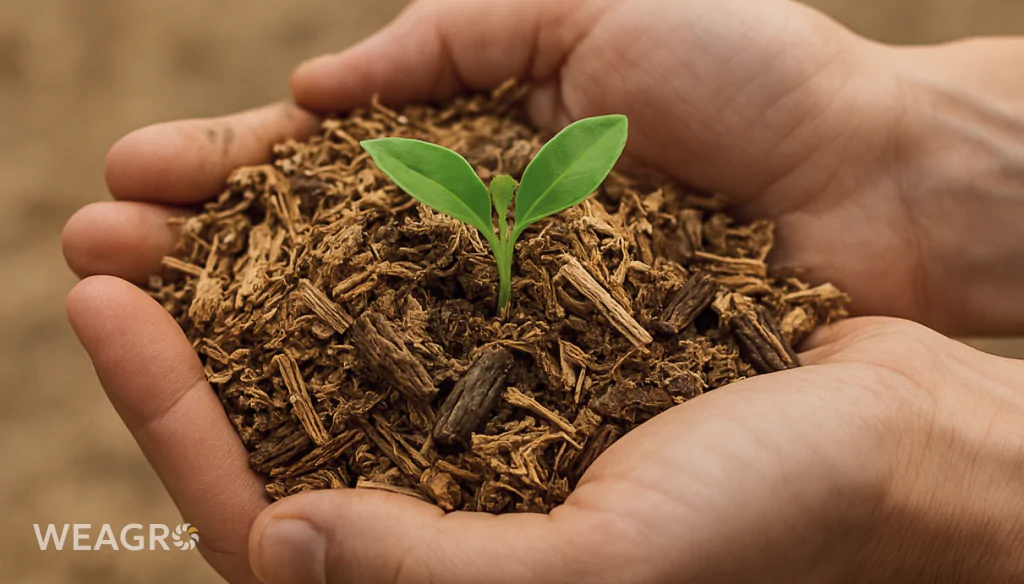
To obtain maximum benefit from soil mulching, the following recommendations should be followed:
- Choose material depending on soil type, climatic conditions, and cultivated crops. For light sandy soils, it is better to use organic matter that retains moisture, and for heavy clay soils – inorganic matter that improves drainage.
- Clean soil of weeds and debris before application. This helps avoid organic matter rotting and unwanted vegetation sprouting.
- Apply a layer of sufficient thickness (5-10 cm for organic mulch, 2-5 cm for inorganic), but do not exceed recommended values. An excessively thick layer impedes gas exchange and water penetration to roots.
- Leave a small space (3-5 cm) around tree trunks, shrubs, and the base of perennial plants to avoid bark rot and root collar damage.
- Regularly check mulch condition and replenish as needed. Organic matter gradually decomposes, so it may require adding a new layer each season.
- Combine mulching with other agricultural practices – irrigation, fertilization, weeding, and loosening. This ensures optimal conditions for plant growth and development.
- Consider seasonal characteristics during care. In autumn, part of the organic matter can be added to soil for enrichment, and in spring – moved away from plants to accelerate warming.
- Do not use materials that may contain weed seeds, disease pathogens, or pests. Before using grass or straw, ensure they have not been treated with herbicides.
- During organic matter decomposition, add organic nitrogen sources (for example, compost from leguminous plants, bone meal, or vermicompost) to compensate for temporary soil deficiency.
Following these simple rules, favorable conditions for plant growth and development can be created, moisture can be conserved, and fertility can be increased. Mulching saves time and effort on irrigation and weeding, while ensuring healthy and abundant harvests.
Read also: Organic fertilizers: what they are, types and application rates
Conclusion
Mulching is an effective and accessible way to improve soil condition and increase agricultural crop yields. Proper material selection considering soil characteristics and cultivated plants allows obtaining maximum benefit from this practice.
Modern technologies, such as magnetic mulch and biodegradable covering, open new possibilities for farmers. Our service WEAGRO helps implement innovative solutions by simplifying the purchase of necessary materials with deferred payment.
Combining traditional methods with cutting-edge developments and financial instruments is the path to successful and sustainable agribusiness development.
